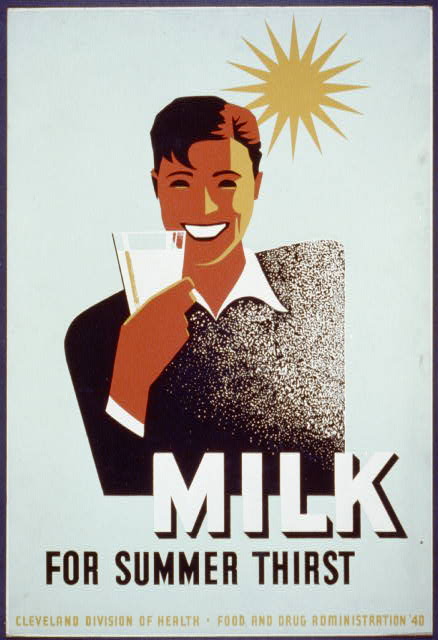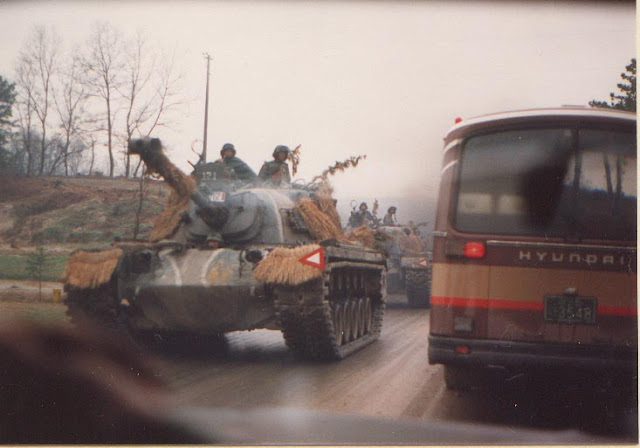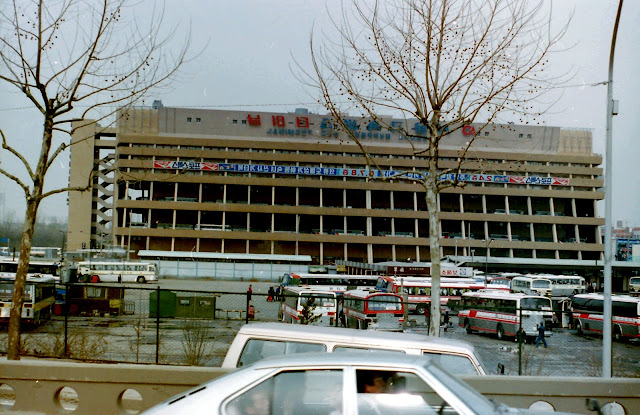Meadow Gold dairy truck. "From local farms to local families."
Some time ago I was hiking from my mechanic's shop down to work, after dropping my truck off to be worked on, and saw this Meadow Gold delivery truck at our hospital.
Now, let me first note that I don't have anything against Meadow Gold milk, etc. At any one time there's a good chance that there's a gallon of Meadow Gold milk in my refrigerator, although I also don't pay all that much attention to what milk brand I'm buying. The big decision in milk purchases here is whether to buy whole milk or 2% milk. My wife buys 2%, I buy whole milk. I do this because I like the way whole milk tastes better and I disregard the whole fat content thing because, well, whole milk tastes better.
I feel somewhat justified in this view, by the way, because a recent study suggests that whole milk wasn't as bad for you as some want to believe, but I mostly feel that way because it validates my desired view. It's part of the same thinking, on my part, that causes me to chuckle a bit in glee with the fact that my coffee addition is turning out to be a good thing. Ha!
But I digress.
What caused me to take this cell phone photograph is the truck's claim that the milt the truck is hauling goes "From local farms to local families." What does that mean?
It doesn't mean that the milk comes from a farm outside of town, that's for sure. In spite of very occasional attempted start ups, there hasn't been a local dairy milk farm here for decades. There was one, or perhaps more than one, at one time, but that's an extremely long time ago.
Dairy farmer in Waterloo Nebraska.
Local dairies were, at one time, the rule nearly everywhere in the United States. At that time there were dairy farmers who did indeed milk a herd of dairy cattle every day, and truck the milk to a local creamery. Casper had a local creamery at one time. But this is very much a thing of the past. There's no local creamery, and there's no local dairy farmers.

Downtown location of the Jersey Creamery in Casper Wyoming, now long gone.
The reasons for this are varied, with some being national in origin, and others being local. Some, seem to me, to be obscure. Locally, truth be known, Natrona County Wyoming was a hard place for a diary to start with. The area is great cattle country, but very poor dairy cow country. Beef cattle, in this region, basically wonder around the vast prairie and are fed in the winter out on the range. Dairy cattle are fed on their farms all year long, and fed a lot, as producing milk is a calorie intensive business. This means that hay farming is an absolute local necessity for a dairy. For beef cattle producers, hay is something we buy for the winter, and we can gauge which type is what we'll buy by need and price. Dairy cattlemen, however, need a constant supply of high quality forage . . and they won't be finding that here on their farms on a year around basis. This may explain why certain Quixotic efforts to start local dairies in the past two decades have rapidly failed.
Another aspect of this, however, is that milk more than other types of
agricultural products, is uniquely suited for mass processing and
delivery. Milk was delivered to people's houses daily up until the
1970s (at least locally), which made a local distributor's economic
viability a little easier, but even as early as the 1940s the large
chain grocery stores would generally only carry their own brands. This
meant that local dairies had to principally rely on home deliveries,
which of course, as noted, they did, also delivering butter in some
cases and also taking specialty Holiday orders.. But its likely that
societal changes slowly did that in. I can't be precise on it, of
course, but there must be some changes that caused the convenience of
home delivery to give way to simply picking milk up at the store. Indeed, as home delivery seems so convenient to me, and lasted so long, I'm struggling a bit to determine what the cause of the demise was, but it may simply have been that people work odder hours, and move around a lot more, than they once did. Other types of home delivery have also fallen off in the past half century too, and it's fairly rare to find a grocery store that will deliver, like they once did.
Milk man delivering milk to transient worker location, 1930s. Note the uniform, which was the norm at the time.
Before I move on from that, for what it's worth, as home milk delivery seems like such an oddity to people who have never experienced it I'll simply note that, when I was a kid, this was done by men who drove around time very early in the morning with a refrigerated van. We kept an insulated box, provided by the creamery, on our back porch and that's where he left the milk. I remember that as I got a bit older if I was awake I could hear him drive up and delivery the milk, which seems to me to have been usually around 5:00 am. In earlier years, however, in most places this same service was done by a man who used a horse drawn wagon. Both of my parents had recollections of milk being delivered in this fashion. In my mother's case, her recollection was that the neighbor's dog hated the milk cart horses and would bark his head off at them. My father remembered milk being delivered this way in Denver in what was probably the 1930s.
Anyhow, home delivery, no matter how convenient, couldn't keep local dairies going, even if I'm not sure why that was. Perhaps the lack of a local source of milk contributed to that. Perhaps also the price of fuel which shot through the roof in the early 1970s had a contributing influence. And, I suspect, a more mobile society in which both men and women were routinely employed probably also had something to do with it.
Man delivering bottles to washed.
Another factor, however, probably is that milk must be processed. Milk, at least commercial milk, is pasteurized and it's no doubt easier to pasteurize a lot of it rather than smaller quantities. As noted, milk is uniquely suited for mass production, in some ways. And milk can pose a health danger if not processed adequately. I suppose that means there is a danger that lurks in large facilities, but if there is, it seems to be pretty minor as milk is very efficiently produced at very low risk to the public.
I suppose given that, I've been very surprised that there's been a movement in the state to allow the local sale of unpasteurized milk. Some ranchers have kept milk cows for their own families for a long time, and some people with small acreages do as well, but this is a bit different. Ranchers with milk cows know cows very well in general, and they know what they're doing. That milk tends to be consumed nearly immediately. I think this is generally also the case with the very few people with small acreages. But having a milk cow as a commercial proposition, or a share in a milk cow, which is another way this has been proposed, seems a very poor idea to me. That concept is part, generally, of the "local foods" movement, and whatever its merits otherwise are, it should be kept in mind that milk's a product that requires special care for safety reasons. Ranchers with milk cows are generally consuming the milk immediately. People who think that they're simply replacing Safeway with a cow, however, may not be, and may be exchanging safety for a loose concept of the product being better which, in the case of milk, might not match reality. There has been, I'd note, at least one milk related illness outbreak in the US in 2012.
I also wonder if people who buy unpasteurized milk are in for a bit of a shock. Most people have never had milk that hasn't been pasteurized and homogenized, and don't realize that unhomogenized milk tastes different and that the cream separates out. I've had it just once, when I was a kid, and still recall that it seemed to taste odd. My wife, whose family did keep a milk cow when she was young, can't stand it, but then she prefers 2% milk, which I don't like.
At any rate, here's another example of something that's really changed, but which we must still look back upon to some extent. There are no more Milk Men, at least there aren't very many, and in a lot of the country, the milk comes from a long ways away. Local milk producers in some places are having a hard time, which is a shame. For an area like central Wyoming, however, local milk production wouldn't make very much sense. Some milk producers, as noted above, are emphasizing that they get their milk locally, but that would seemingly require a little explanation to make sense. Probably what it means is that the milk was local to where it was processed, probably down in Colorado, but not to us here in Wyoming. Nor could it be, really.































